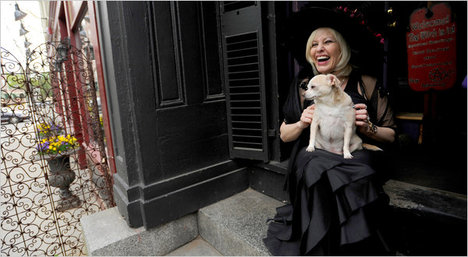(p. A1) BEIJING — Liu Yang, a coal miner’s daughter, arrived in the capital this past summer with a freshly printed diploma from Datong University, $140 in her wallet and an air of invincibility.
Her first taste of reality came later the same day, as she lugged her bags through a ramshackle neighborhood, not far from the Olympic Village, where tens of thousands of other young strivers cram four to a room.
Unable to find a bed and unimpressed by the rabbit warren of slapdash buildings, Ms. Liu scowled as the smell of trash wafted up around her. “Beijing isn’t like this in the movies,” she said.
Often the first from their families to finish even high school, ambitious graduates like Ms. Liu are part of an unprecedented wave of young people all around China who were supposed to move the country’s labor-dependent economy toward a white-collar future. In 1998, when Jiang Zemin, then the president, announced plans to bolster higher education, Chinese universities and colleges produced (p. A12) 830,000 graduates a year. Last May, that number was more than six million and rising.
It is a remarkable achievement, yet for a government fixated on stability such figures are also a cause for concern. The economy, despite its robust growth, does not generate enough good professional jobs to absorb the influx of highly educated young adults. And many of them bear the inflated expectations of their parents, who emptied their bank accounts to buy them the good life that a higher education is presumed to guarantee.
“College essentially provided them with nothing,” said Zhang Ming, a political scientist and vocal critic of China’s education system. “For many young graduates, it’s all about survival. If there was ever an economic crisis, they could be a source of instability.”
. . .
Chinese sociologists have come up with a new term for educated young people who move in search of work like Ms. Liu: the ant tribe. It is a reference to their immense numbers — at least 100,000 in Beijing alone — and to the fact that they often settle into crowded neighborhoods, toiling for wages that would give even low-paid factory workers pause.
“Like ants, they gather in colonies, sometimes underground in basements, and work long and hard,” said Zhou Xiaozheng, a sociology professor at Renmin University in Beijing.
. . .
A fellow Datong University graduate, Yuan Lei, threw the first wet blanket over the exuberance of Ms. Liu, Mr. Li and three friends not long after their July arrival in Beijing. Mr. Yuan had arrived several months earlier for an internship but was still jobless.
“If you’re not the son of an official or you don’t come from money, life is going to be bitter,” he told them over bowls of 90-cent noodles, their first meal in the capital.
. . .
In the end, Mr. Li and his friends settled for sales jobs with an instant noodle company. The starting salary, a low $180 a month, turned out to be partly contingent on meeting ambitious sales figures. Wearing purple golf shirts with the words “Lao Yun Pickled Vegetable Beef Noodles,” they worked 12-hour days, returning home after dark to a meal of instant noodles.
. . .
Mr. Li worried aloud whether he would be able to marry his high school sweetheart, who had accompanied him here, if he could not earn enough money to buy a home. Such concerns are rampant among young Chinese men, who have been squeezed by skyrocketing real estate prices and a culture that demands that a groom provide an apartment for his bride. “I’m giving myself two years,” he said, his voice trailing off.
By November, the pressure had taken its toll on two of the others, including the irrepressible Liu Yang. After quitting the noodle company and finding no other job, she gave up and returned home.
For the full story, see:
ANDREW JACOBS. “China’s Army of Graduates Is Struggling.” The New York Times, First Section (Sun., December 12, 2010): A1 & A12.
(Note: ellipses added.)
(Note: the online version of the story is dated December 11, 2010 and has the title “China’s Army of Graduates Struggles for Jobs.”)





